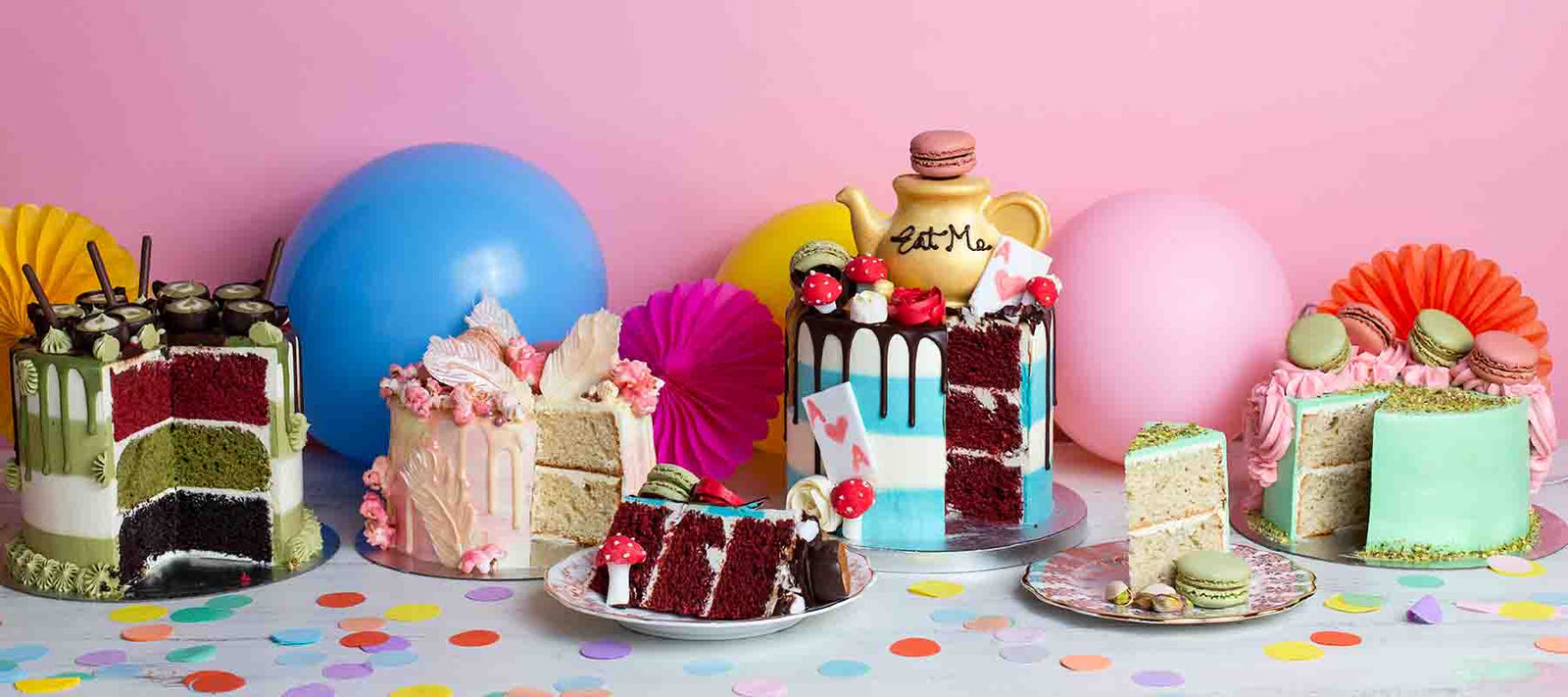
In London and Surrey, our Macaron Cakes, crafted by a Michelin-trained chef, blend French finesse with indulgent flavour. Freshly baked to order and delivered straight to your door with complimentary delivery. Each cake in this collection is decorated with handmade macarons, boasting a smooth, crisp shell, a harmonious balance of chewiness and softness, unmistakable "feet" for that perfect rise, and a filling-to-shell ratio that's just right. And, as always:
- Proprietary moist & airy sponge recipe perfected over 13 years.
- Naturally 50% less sugar Swiss meringue buttercream.
- Guaranteed prompt tracked delivery handled in-house.
Our delicious lofty cakes are given a Parisian make-over with plenty of macarons in various flavours. There's often an unnecessary unspoken rivalry between macarons and cakes when we think there needn't be when one can have BOTH! The colours, textures and flavours of our macarons are paired perfectly to create a range of macaron cakes from delicate and pretty like the Matcha-Sakura, shabby-chic like the Nuddy Muddy MacDreamy, or wildly bonkers like the LSD Cake.
The MacDaddy's Party macaron cake is the one for real macaron junkies with nothing but piles of macarons, and our team's favourites are tossed between the Pink Wink and Ghetto-Riche Salted Caramel cakes.
You can definitely have your cake AND macarons, and eat them both with an Anges de sucre cake.
You can have your cake delivered anywhere you like – our drivers are in-house so we can be very flexible. Restaurants, offices and home addresses are all normal delivery locations.
2 weeks is recommended. We have limited availability reserved for orders placed up to 2 days before.
If you are unavailable at any point between 09:00-17:00 we would recommend providing detailed alternative instructions on a safe place or nominate a neighbour/porter/concierge who is willing to accept your perishable item on your behalf.

All our cakes are handcrafted to order and delivered across London and Surrey within two working days. Need it sooner? We offer next-day delivery—just WhatsApp us to check availability.
Each cake is carefully packaged to protect its intricate finish and preserve delicate flavours during transit. Our premium delivery service ensures your cake arrives gift-ready, whether for a birthday, wedding, or special occasion.
We bake everything fresh using the finest ingredients. For best taste, allow your cake to reach room temperature for three hours before serving.
Complimentary delivery is included for all local orders placed online.